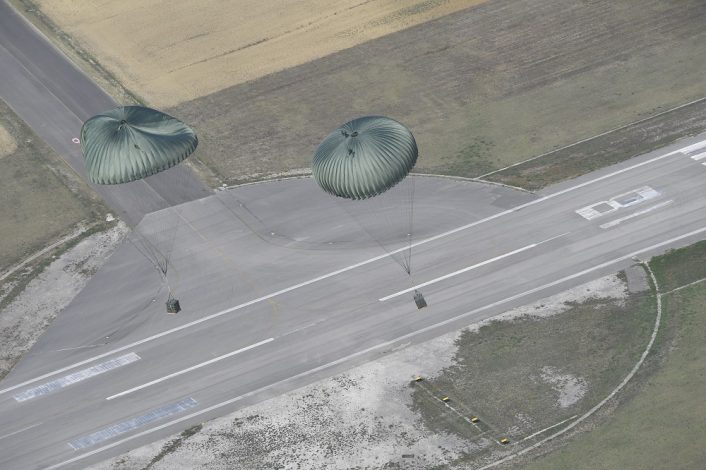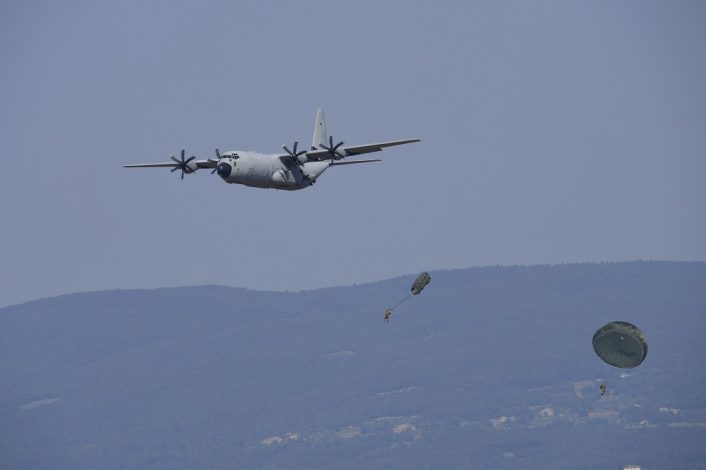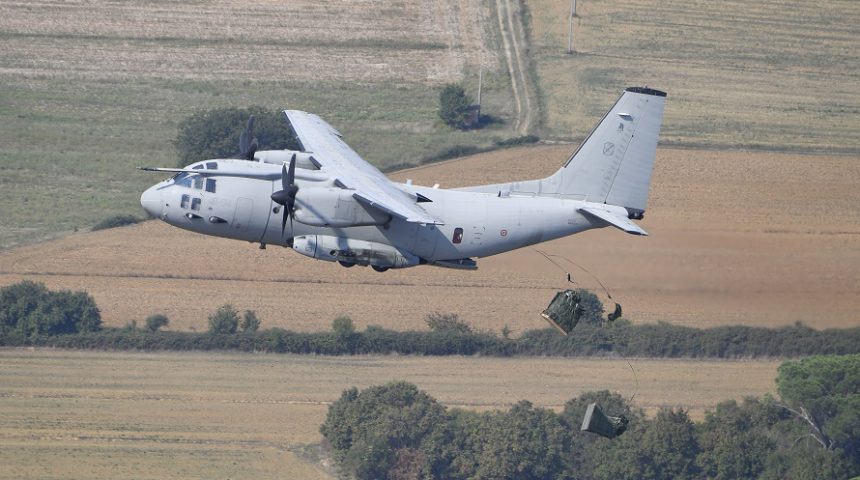The Aeronautica Militare considers FARP (Forward Arming and Refueling Point) a crucial capability to support both Special Operations and civilian Search and Rescue missions.
The Italian Air Force has recently tested the possibility to airdrop special fuel containers from C-27J Spartan aircraft of the 46^ Aerobrigata (Air Brigade). The activity was carried out as part of the FARP capability development, that the service considers crucial to conduct Special Operations, Personnel Recovery as well as civil and military SAR (Search And Rescue) missions.
What is a Forward Arming and Refueling Point?
As the name implies, it’s an airstrip where aircraft (usually, Short Take Off Vertical Landing – STOVL – jets or helicopters) can be refuelled and re-armed. A FARP is usually a temporary facility, located at a reduced distance from the area of operation or target, thus allowing a faster turnaround time during sustained operations. In other words, FARPs enable refueling on the ground of various types of aircraft, in expeditionary scenarios, in semi-permissive environments or where it is impossible to reach the refueling point with ground vehicles, as happened during the rescue operations carried out by the Italian military following the earthquake that hit Central Italy few years ago.
While extremely important where air-to-air refueling is not availble, FARPs may be difficult to install in isolated/austere areas, where bringing all the required material to build up the improvised operating base can be complex. For this reason, as part of the FIT (Force Integration Training) and “Tende Scaglia 2020” exercises, the Italian Air Force has tested the airdrop of the FARP over Siena Ampugnano airfield from a C-27J using the Cargo Delivery System (CDS). The activity, coordinated by the SOATG (Special Operation Air Task Group) of the 1^ Brigata Aerea Operazioni Speciali (1st Air Brigade “Special Operations”), saw the involvement of a C-130J, that performed a tactical low-level airdrop of personnel who could prepare the FARP for the subsequent refuelling of an HH-101 Caesar helicopter (the Italian Air Force variant of the successful Leonardo Helicopters AW101).

Once on the ground at the FARP, refueling can be done with engines on or off (“cold refueling” or “hot refueling”); in daylight conditions or at night, using NVGs (Night Vision Goggles); using pressure or gravity systems; serving one or multiple aircraft. Interestingly, in certain cases, FARPs can be used to refuel aircraft using systems that would be not compatible in the air. The Air Landed Aircraft Refuelling Point is another refueling system that is used to provide simultaneous refueling on of up to 4 aircraft by pumping fuel from the KC-130’s tanks. This system has been recently put to test by the Italian Air Force as part of the Expeditionary Proof of Concept Exercise, carried out at Pantelleria airport on Jul. 30, 2020. During the PoC, that saw the participation of the first F-35B of the Italian Air Force, the first ItAF STOVL aircraft was refueled on the ground directly from the KC-130J tanker.

Along with the peculiar FARP capability, it’s worth highlighting that the Italian Air Force is also one of the few air arms in the world with the ability to carry out autonomous HAAR (Helicopter Air-to-Air Refueling) operations using KC-130J tankers of the 46^ Brigata Aerea (Air Brigade, based at Pisa, and HH-101A Caesar helicopters of the 15° and 9° Stormo (Wing), based at Cervia and Grazzanise. In February 2020, KC-130J tankers and HH-101A helicopters of the 15° Stormo carried out a complex night mission that saw the helicopters remain airborne for +6 hours, setting a record for the Italian Air Force.









